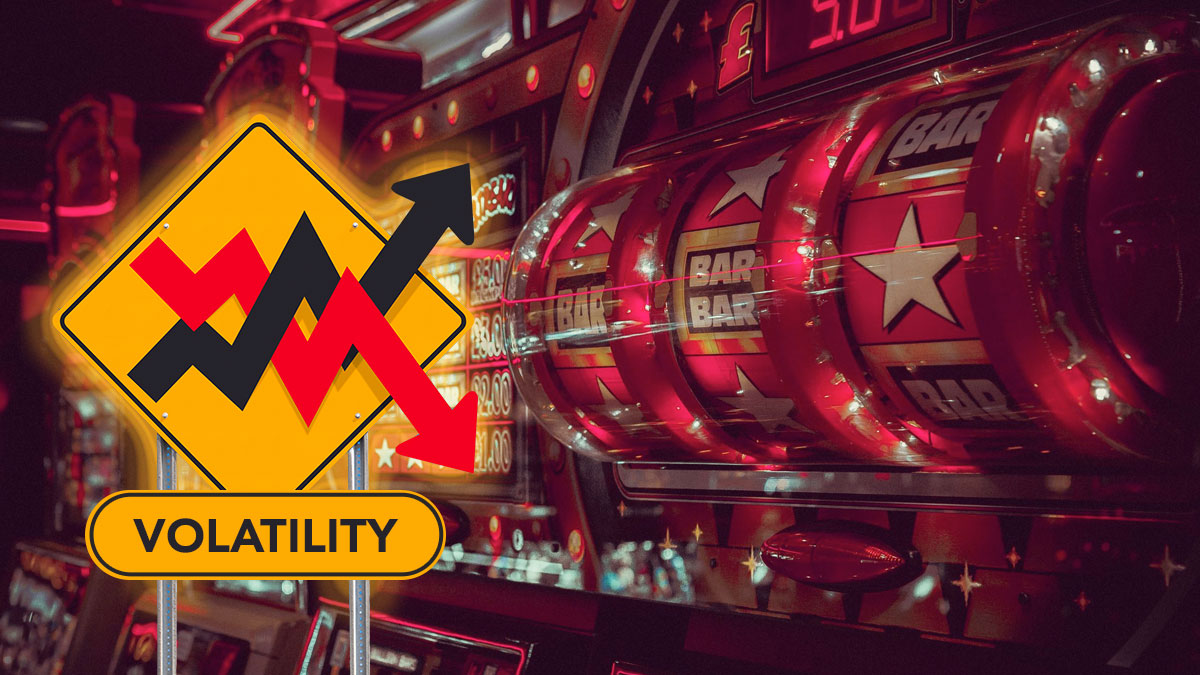Slots payouts can be frustratingly inconsistent. They pay much less frequently than most casino games, such as baccarat, blackjack, and roulette.
Slot machines feature extreme volatility when compared to other games. Oftentimes, you must wait for a big payout to come before you earn a profit or at least win back most of your previous losses.
Highly volatile slot machines offer the most features and/or largest jackpots. Meanwhile, low-volatility games deliver more consistent prizes.
Depending on if you like more features or frequent payouts, you’ll have a preference on volatility. Therefore, you’ll appreciate a rating on this matter.
Unfortunately, not all slot machines provide one of these ratings. This guide explains what you can do to estimate volatility in the absence of such information.
Some Developers Include a Volatility Rating
Some slots developers, especially those who make online games, offer helpful info in the pay table. For example, they may feature return to player (RTP) and hit frequency figures in the info screen.
Certain developers also rate the volatility of their slots. For example, a provider may show that a certain game offers 4.5 out of 5 volatility.
This information gives you an idea on how often to expect winning spins. The higher the volatility, the more dispersed your payouts will be.
It’s always helpful to have as much info as possible when playing a slot. Volatility ratings are definitely welcome when available.
What Exactly Does a Volatility Rating Tell You?
Most slot machines feature a wide range of prizes worth as little as 1x your stake up to 5,000x your stake or more. Therefore, they don’t pay out as evenly as other types of casino games.
You may feel lost regarding your chances of winning with slot machines. Volatility ratings give you an indication on how much you can expect to win.
Some developers give their slots a rating ranging from 1 to 5, or 1 to 10. You can use these figures to form an idea on your chances of winning.
You may like chasing huge prizes and don’t care how long your bankroll will last. In such cases, you want to play high-volatility slots with big win potential.
On the other hand, you might be a gambler who wants a better chance of ending each session a winner. Low-volatility games provide a better opportunity to reach this goal.
Why Is This Information Important?
Slot machines make bank management extremely tough. Their volatility can be brutal in the short run and cost you lots of money.
Again, you might be the type of player who can handle this volatility and still enjoys slots. But if you’re dealing with a limited bankroll, you won’t get much entertainment out of a volatile slot.
Here’s an example to illustrate this point:
- You deposit $30 onto a gaming site.
- You play a slot with a 9/10 volatility rating.
- You risk $0.50 per spin, feeling that this is a relatively safe bet in relation to your bankroll.
- Due to the high volatility, you have a rough session and quickly lose your $30 within the first half hour.
Of course, you can always deposit more money or play slots with lower minimum bets to extend your bankroll. However, you might currently only have enough funds for a one-time deposit.
A rating on volatility helps you better manage your bankroll under any circumstance. When dealing with limited funds, you might consider avoiding highly volatile slots to stretch your money further.
What Drives Up Volatility?
Before I get into how to determine volatility without a rating, I’d like to discuss exactly what makes slots more volatile. The following factors have a big impact on short-term results.
Features
Features ramp up the excitement in slot machines. They include various bonuses, such as expanding wilds, random wilds, scatter payouts, free spins, and win multipliers.
Some players judge games entirely based on the quantity and types of features. They want to enjoy revolutionary bonuses that can deliver big wins.
Of course, a good portion of the RTP is wrapped up in these extras. Gamblers must trigger and benefit from the features to win any serious money.
Maximum Prize
Many slots differ based on their maximum payout. Some games only offer a top prize worth 1,000x your stake, while others feature up to 50,000x payouts or more.
Bigger prizes definitely create more excitement. They can deliver life-changing money if you bet the right amount.
However, developers must make up for these large payouts by giving out fewer wins. Considering that you have low odds of winning the top prize, you’ll often lose quite a bit in any given session.
Small Payouts
Smaller prizes are on the other end of the spectrum from max payouts. They’re far from exciting, but they do play a role in the volatility.
A game with several low payouts (e.g. those ranging from 1x to 5x) will likely pay more frequently. Therefore, you can expect a larger percentage of your short-term bets coming back.
RTP
Return to player (RTP) refers to how much a slot pays back over the long run. Most land-based slot machines offer between 90% and 95% RTP, while many online slots deliver between 95% and 97% payback.
“Long run” is the key term here, because RTP figures aren’t realized until after millions of spins. Nevertheless, payback can affect how volatile slots are to some degree. High RTP reduces volatility by increasing the chances that you win money.
Figuring Out Slots Volatility Without a Rating
Unfortunately, not all slot machines offer a volatility rating. You can use the following factors to determine volatility in the absence of a rating.
Look at the Features
Features may be the driving force towards slots popularity these days. However, they also increase the uncertainty, too.
You probably won’t win much money in the short run on games with several features. You should check the info screen or a review to see how many bonuses a particular game has.
Consider the Smallest Prizes
Small payouts aren’t the most inspiring parts of slot machines. However, they can ensure that you win more often.
A slot with three or more prizes ranging from 1x to 5x your stake probably has low volatility. The game is likely to deliver these payouts on a frequent basis.
Note How Much the Jackpot Is Worth
Slots with big maximum payouts or progressive jackpots give you the chance to live out your gambling dreams. You can win a six- or seven-figure payout through these games and potentially retire early.
But the developers that offer these slots also need to account for future big winners. They make up for the possible life-changing fortunes by delivering fewer small prizes.
Check Out the Hit Frequency
Hit frequency and volatility aren’t exactly the same thing. The former refers to your chances of winning a payout of any kind on a single spin.
However, hit frequency is helpful when trying to figure out volatility. A slot with high hit frequency (e.g. 30% to 40%) ensures that you get paid more often.
Conclusion
It’s always better when developers provide a volatility rating. This way, you know exactly how volatile a slot will be and prepare accordingly.
If you play real money slots long enough, though, you’ll eventually come across entertaining games that don’t offer such ratings. In these cases, you can take steps to figure out the volatility yourself.
Here’s a recap of factors to consider when judging volatility yourself:
- Jackpot size/maximum payout
- Number of features
- Number of small payouts
- RTP
You may not get a perfect figure on a game’s volatility with this information. But if you see a slot with multiple features and a 50,000x max payout, you can likely guess that it’ll offer wild short-term results.
Michael Stevens
Michael Stevens has been researching and writing topics involving the gambling industry for well over a decade now and is considered an expert on all things casino and sports betting. Michael has been writing for GamblingSites.org since early 2016. …



